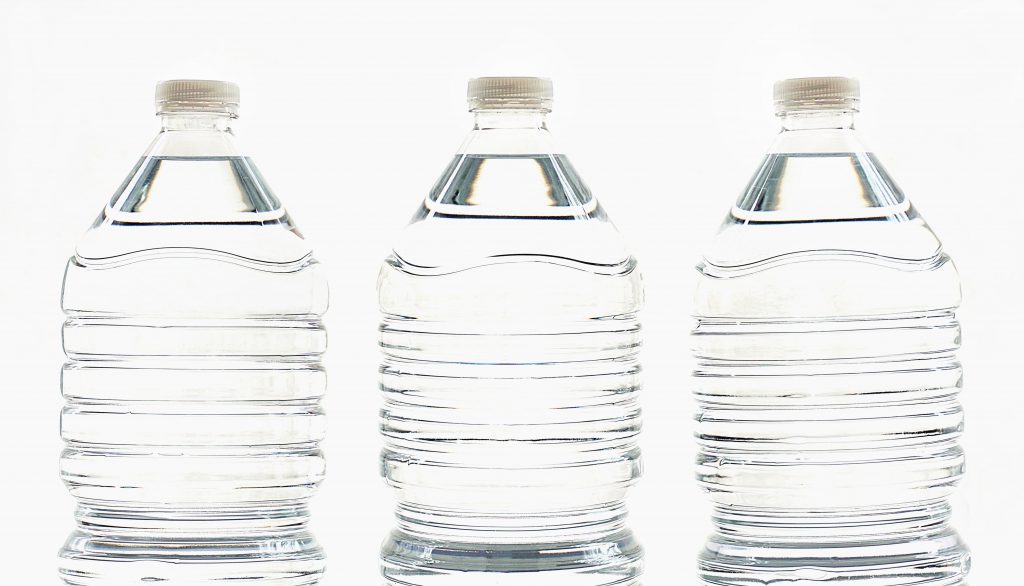It is well known that water is a fundamental substance for life on Earth and for the well-being of our body, that is made up of over 70% water.
If it is true that human fasting resistance can be prolonged over time, it’s not for water and liquids. In fact in case of lack of food our body is able to use reserve fats that provide the necessary energy for our biological activities, while it is not able to compensate for the lack of fluids, which are constantly lost through sweat and urination.
Water is used by the body for many and different functions and it can be obtained from lipids, carbohydrates and proteins metabolism (endogenous water), or can enter the body through food (exogenous water).
Only a part of exogenous water is ingested with foods such as fruit and vegetables, while the greater amount is represented by the drinking water.
The question is: is it better to drink mineral water or tap water?
Before describing characteristics of each type of water, it should be said that at least in our country drinking water is safety in terms of human health, although not always pleasant in taste.Tap water, or drinking water, comes from surface water and there are laws that regulate its quality and health through treatments and conditions of the water networks in which it flows. Regulations on water treatment are of utmost importance because water is one of the major carriers of pollutants and pathogens; it is estimated that about 11% of the world’s population drinks contaminated water and that 700,000 children die before the age of 5 as a result of diseases due to the infestation of water they drink.
It is called healthy water the water containing no microorganisms, parasites and noxious substances; it must be clear, odourless and tasteless.
In order to have these characteristics, surface water is subjected to:
• sedimentation, filtration and softening to remove odours, flavours and cloudiness. This treatment is called correction;
• disinfection treatments to kill microorganisms, even the most resistant pathogens. Chlorination with sodium hypochlorite, gaseous chlorine or chlorine dioxide or UV rays are commonly used in disinfection. Sodium hypochlorite is fed into the pipe through a dosing pump in order to completely eliminate the bacterial charge. To avoid that the water takes the unpleasant taste of chlorine, it is treated with activated carbon that absorbs it. Disinfection must be carried out under controlled conditions of turbidity, pH and temperature. To ensure total health safety, the legislation provides for a minimum recommended concentration of disinfectant residue. The tolerated concentration is not the same in all countries: in Europe the level of chlorine tolerated is very low, equal to 0.2 mg/L, compared to 1 mg/L of the United States.
A valid alternative to chemical disinfection, to which some pathogens can be resistant, are the UV debacterization systems. UV radiation, with a wavelength from 240 to 280 nm, directly affects microorganisms DNA, killing them. This treatment is eco-friendly and does not alter the water taste; in addition it is cheap as it provides a low electricity consumption. However, the disinfectant action is limited in time.
Mineral water flows from groundwater or underground deposits and, like drinking water, is subject to terms established by the law, such as to be pure at origin, do not undergo treatments and be bottled at the source or in appropriate establishments, which ensure its health. What fundamentally distinguishes mineral water from tap water is the amount of mineral salts and its effects on the body. Mineral waters are distinguished as calcic, bicarbonatic, ferruginous, magnesian, sodic, low in sodium depending on the saline composition.

The content in grams of the mineral salts dissolved in 1 L of mineral water and evaporated at 180° C is named fixed residue, a characteristic that classifies mineral waters as follows:
• minimal mineralized waters, when they have a fixed residue of less than 50 mg/L. They have an effect on kidney stones and hypertension;
• lightly mineralized waters, known as oligomineral waters, when the fixed residue does not exceed 500 mg/L and is suitable for mass consumption;
• medium mineralized waters, when they have a fixed residue from 500 mg/L to 1500 mg/L. They quickly replenish salts lost by sweating; for this reason they must be alternated with other types and are not indicated for daily consumption;
• rich in mineral salts waters water, when the fixed residue exceeds 1500 mg/L and that is why they are recommended only for therapeutic purposes.
The fixed residue is a total value reported on the labels of mineral water bottles together with the percentage composition for each type of salt.
To make mineral waters more refreshing and pleasant to taste, it can be added carbon dioxide: they are the so-called “sparkling” waters.
A correct answer to the question “Tap water or mineral water?” doesn’t exist because the taste of water it’s an absolutely subjective aspect. However, in terms of safety, mineral water is safe when it is declared bacteriologically pure, as well as tap water. Tap water in fact is subjected to more stringent and frequent controls provided by law and so it can also be safer.
ACTIVITY: Do exercise 11 and exercise 18. Do a research on the use of sodium hypochlorite as disinfectant: in which areas is it used?

